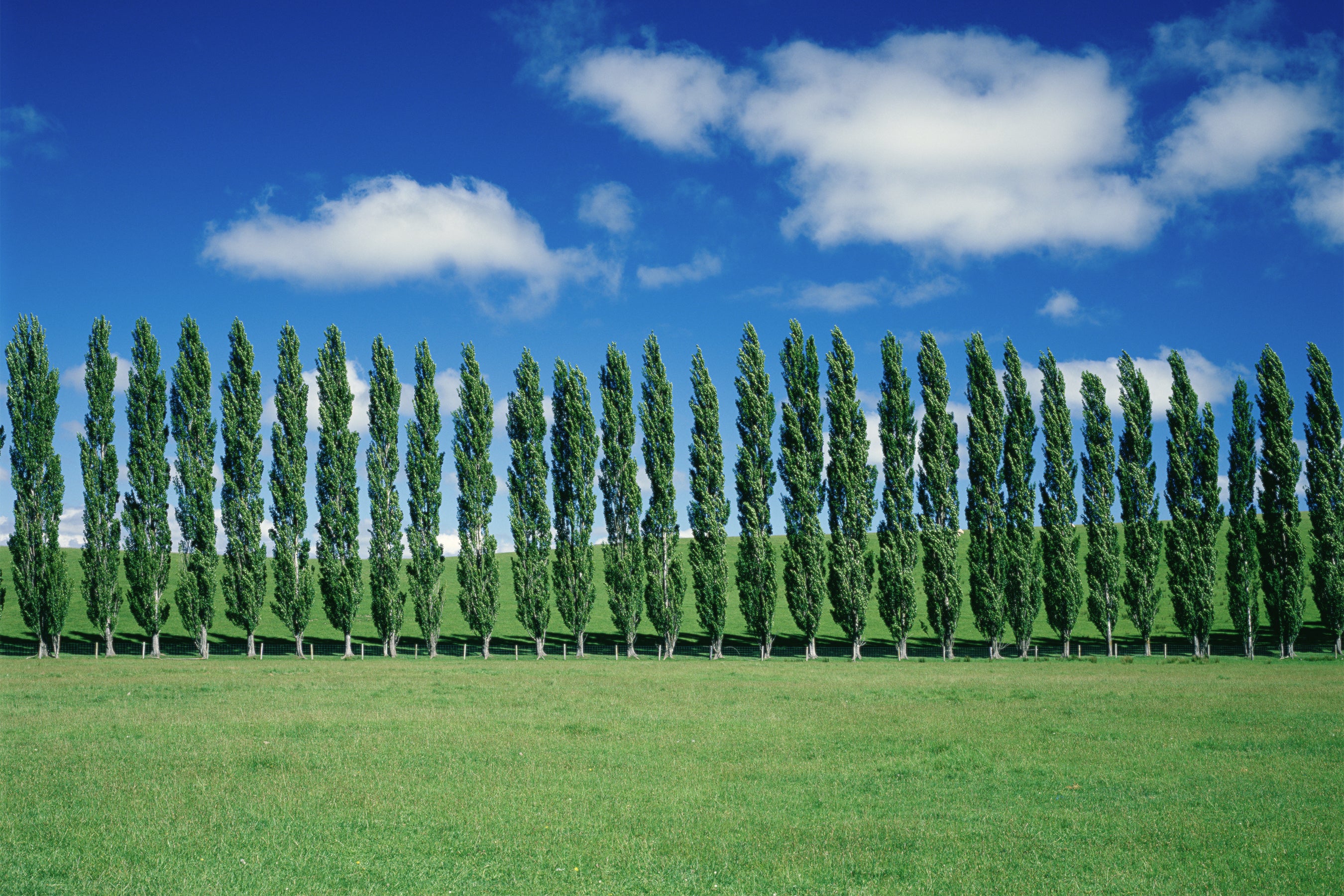
Steven Strauss was skeptical when he first heard about a poplar tree bioengineered to suck more carbon dioxide out of the air.
The forest biotechnology expert knew that trees are difficult to genetically alter — and that the “tender loving care” of a laboratory is no substitute for the outside world. So when two entrepreneurs asked him to help test out the idea, Strauss was intrigued but hesitant.
“If it works, it would be a wonderful thing,” he said he thought at the time. “But typically in research on agriculture or forestry, just because it works in the lab or the greenhouse, [that] tells you nothing.”
Four years later, those entrepreneurs — Maddie Hall and Patrick Mellor — have raised $30 million for Living Carbon, a company that aims to plant between 4 million and 5 million poplar trees by the spring of 2024 using “photosynthesis enhanced” seeds. Eventually, the company hopes to enter the carbon offset market, selling credits to companies that need to reach net-zero emission goals.
One of the field trials will be conducted in a forest at Oregon State University, where Strauss is a distinguished professor of forest biotechnology. Other locations are throughout the United States, including the site of an abandoned mine in Pennsylvania with degraded soils.
Co-founders Hall and Mellor hope the trials will prove that the taller trees can store as much as 27 percent more CO2 than ordinary poplars. The company’s next step will be to show that the CO2 can be stored in lumber and plywood, outlasting the poplar’s lifespan, which can reach up to 200 years.
The Department of Energy, which provided Living Carbon with a $500,000 grant in 2021, predicted that the company’s approach could remove billions of tons of CO2 from the atmosphere if successfully scaled up. Investors have since lined up, including Toyota Ventures and Singapore’s state-owned Temasek.
Lisa Coca, a partner for the Toyota Ventures Climate Fund, said the voluntary carbon credit market could exceed $50 billion by 2030 — but only if high volumes of credits become available in the near term. Living Carbon, she argued, could supply credits within the next three to five years.
“Living Carbon’s synthetic biology platform has the potential to fill the gap between supply and demand by leveraging the powerful combination of proven nature-based solutions as a carbon sink and genetic engineering to deliver high-quality credits to the market,” Coca said in a recent statement.
The Mona Lisa connection
The poplar tree is among the fastest growing trees in the world — and it has a long and interesting history.
Greek and Roman soldiers made shields out of the wood. In the U.S., where poplars are sometimes called cottonwood or aspens, they can often be found in gardens, stretching between 50 and 160 feet tall. The slim, conical trees are also increasingly used for home building, often in the form of plywood.
Leonardo da Vinci chose a panel of poplar wood to paint the Mona Lisa almost 500 years ago.
At Oregon State, Strauss has spent much of his career trying to improve poplars. He first tackled the tree’s bad breath: It emits a chemical called isoprene that, when mixed with tailpipe pollution, can increase the global warming potential of the already potent methane.
Then he tamed the poplar’s active sex life. A forest of regular poplars, with a gang of trees producing different female flowers and male pollen, could generate a spectrum of seedlings, enough to overwhelm those of a genetically engineered newcomer.
After years of research on Oregon State’s 9-acre tract of poplars, Strauss and his colleagues discovered a way to give altered trees “containment traits” that kept genetically modified trees distinctive.
Now Strauss is part of the poplar’s biggest experiment. Strauss emphasized that he doesn’t have any investment in or shares with the company. His interest, he said, is “moving ahead with what works.”
Recently, a team from Living Carbon joined Strauss’ students to plant the seeds of what the company calls “super trees.” The team “had a party putting them into the ground,” Strauss said.
Hall, the CEO of Living Carbon, has described high hopes for the project.
“Today Earth no longer has the ability to sequester carbon as quickly. We have skewed the metabolism of our biosphere,” she wrote in a blog post. “And now it’s time for the big inhale.”
Reprinted from E&E News with permission from POLITICO, LLC. Copyright 2023. E&E News provides essential news for energy and environment professionals.
